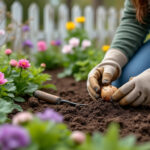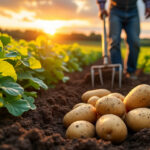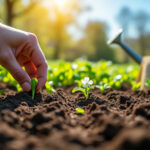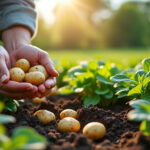As the cooler months of autumn approach, the allure of parsnips begins to capture the imaginations of gardeners everywhere. With their unique sweetness heightened by frost, these root vegetables are a true delight of the season, offering a versatile ingredient for hearty winter recipes.
- Understanding parsnip growth cycles
- The benefits of waiting for frost
- Essential tips for harvesting parsnips
- Storage methods for long-lasting freshness
- Potential issues with parsnip harvesting
Understanding Parsnip Growth Cycles
The parsnip, known scientifically as Pastinaca sativa, is a biennial root vegetable belonging to the Umbellifer family. Although typically grown as an annual, it completes its life cycle in two years if left unharvested, producing flowers and seeds in its second year.
From planting to harvesting, the typical maturation period for parsnips can range from 100 to 120 days, depending on the variety and growing conditions. Generally, they flourish in cooler climates, making them an ideal crop for fall planting.
| Time to Maturity | Best Harvesting Period |
|---|---|
| 100 – 120 days | Late fall to early winter |
The Benefits of Waiting for Frost
It’s tempting to harvest parsnips right after they’ve reached a considerable size, often *1½ to 2 inches (3-8 cm)* in diameter and *8 to 12 inches (20-30 cm)* long. However, the flavor is dramatically enhanced if they endure a few light frosts. During this period, stored starches within the root convert into sugars, resulting in a delectable sweetness that is hard to rival.
- Enhances flavor 🌱
- Improves texture 🍽️
- Encourages late-season harvest flexibility 🍁
Essential Tips for Harvesting Parsnips
Harvesting parsnips requires some care to avoid damaging the roots. Here are the steps to follow:
- Choose a dry day for digging, as wet conditions can lead to premature decay.
- Utilize a garden fork to loosen the soil around the roots carefully. This prevents breaking the delicate taproot.
- Trim the foliage to about one inch above the root. This method aids in effective storage and preparation.
Gardening gloves are advised, as some individuals may develop a reaction to contact with parsnip foliage due to phytophotodermatitis. If exposed to sunlight, the sap combined with moisture on the skin can lead to irritation.
| Harvesting Steps | Tips |
|---|---|
| 1. Clear soil | Avoid breaking roots |
| 2. Use gloves | Prevent skin reactions |
| 3. Trim foliage | Enhance storage life |
Storage Methods for Long-Lasting Freshness
Once harvested, parsnips can be stored in several ways to maintain their quality:
- Root Cellar: Ideal for longer-term storage, place roots in moist sand within a container.
- Refrigerator: Keep the unwashed roots in a plastic bag for up to two weeks.
- Freezing: Blanch cut parsnips briefly and store in freezer-safe bags for up to nine months.
Choosing the right storage method extends the usability of parsnips throughout the winter when fresh produce can be scarce. Each method preserves the nutrients within these robust vegetables.
When is it too late to prune your roses? Tips for perfect timing?
Potential Issues with Parsnip Harvesting
It’s essential to be aware of challenges that may arise during harvesting. If parsnips are left in the ground too long, they can become woody, resulting in less palatable flavors. Additionally, if allowed to flower, the roots may develop a tough texture, making harvest less appealing.
- Monitor for woody cores in older parsnips 🌿
- Keep an eye on flowering to avoid compromised roots 🌟
- Harvest before new foliage emerges in spring 🌼
| Issue | Solution |
|---|---|
| Woody cores | Cut out before cooking or storing |
| Flowering | Harvest before flowers appear |
| Damaged roots | Handle carefully during harvest |
FAQ
- Can parsnips be harvested in spring?
- Yes, once thawed, parsnips can be harvested in spring provided they are gathered before new growth begins.
- What is the best way to ensure sweet parsnips?
- Allow them to experience a few frosts before harvesting for the best flavor.
- Can you store parsnips in water?
- It’s not recommended to store parsnips in water, as excess moisture can lead to decay. Instead, opt for dry storage methods.
- Do parsnips grow better in certain soil types?
- Parsnips thrive in well-draining, loamy soil free from stones to ensure straight, healthy roots.
- How long can harvested parsnips be stored?
- Stored properly, parsnips can last several months, especially in a root cellar setup.
















